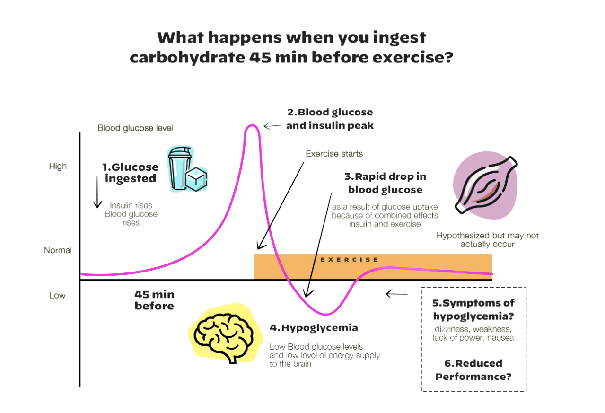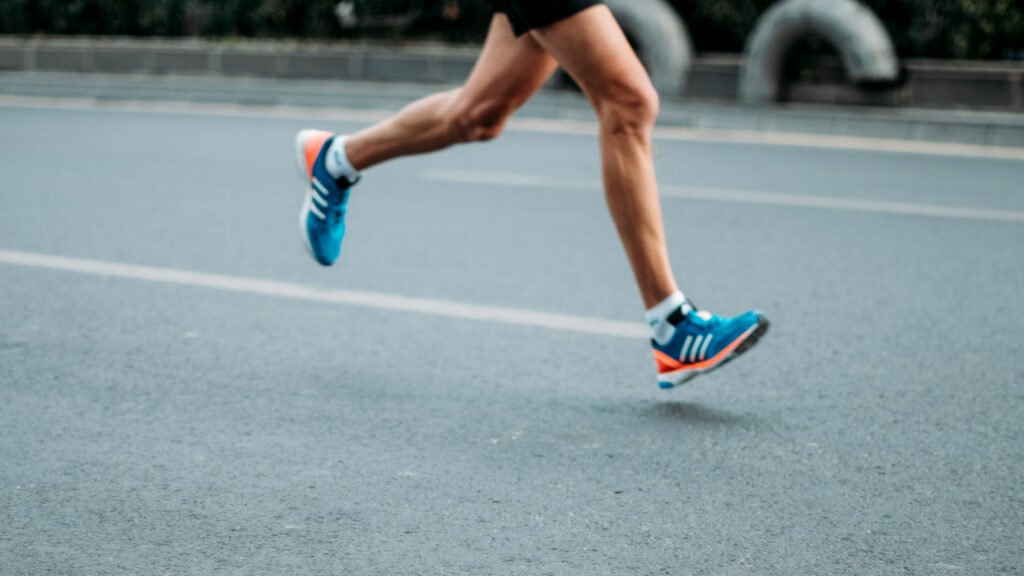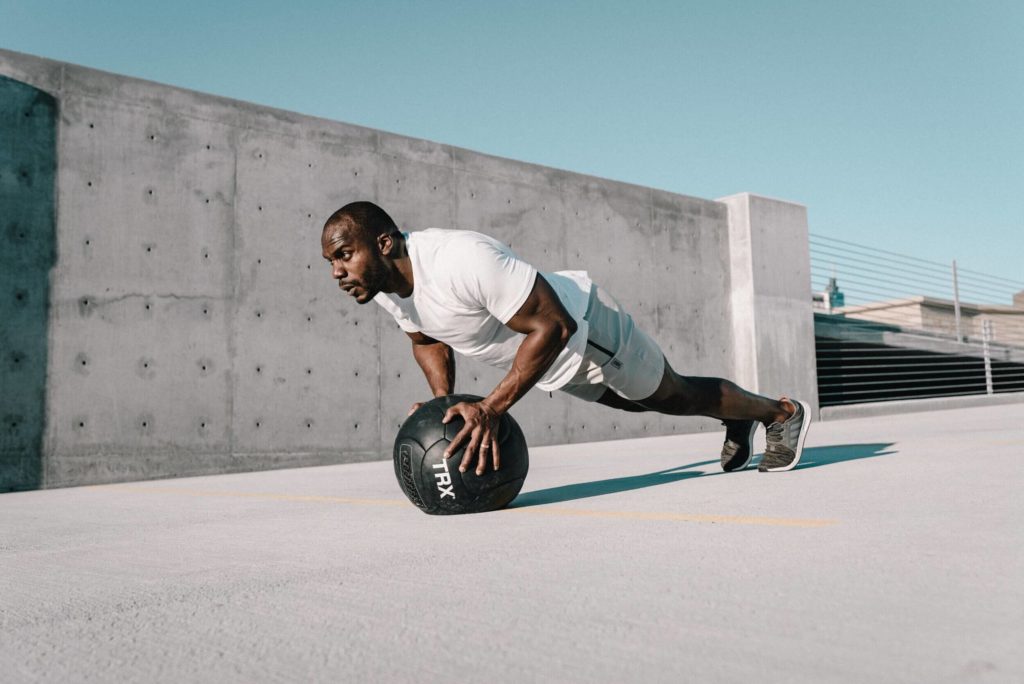Beyond training plans and sophisticated gear, your fueling strategy can make or break performance. During exercise, your body operates like a high-performance race car, and glucose is the fuel. It powers your brain, muscles, and organs through every stage of exertion.
A balanced intake of carbohydrates, fats, and proteins supports stable glucose levels. But your blood sugar isn’t static, and fluctuations can either support or sabotage your athletic goals.
Let’s explore how glucose functions during exercise, why metabolic flexibility matters, and how to optimize fueling strategies for both performance and recovery.
Read more: Ultimate guide to blood glucose levels
How blood sugar affects athletic performance

The type of sugars in your diet — and how your body processes them — influences how glucose enters the bloodstream and fuels your workout. Both elevated and depleted blood glucose can impair performance.
Chronic high blood sugar may even blunt your body’s adaptive response to exercise. Research published in Nature Metabolism shows that persistently elevated glucose can reduce oxygen uptake during aerobic activity and hinder muscle growth.
Aerobic training increases your muscles’ ability to absorb oxygen and store glycogen. But if blood glucose remains too high, this adaptive response is weakened, limiting long-term performance gains. Worse, low aerobic fitness is closely linked to increased risk of premature death.
Fuel use during exercise
Glucose and free fatty acids are your primary fuels during exercise. Here’s how energy demand is typically met during a workout:
- First 15 minutes: Glucose is drawn from your bloodstream.
- After 15–30 minutes: Your liver breaks down glycogen to release glucose.
- Beyond 30 minutes: Fatty acids become the dominant fuel source.
Exercise depletes glucose and glycogen stores, which can take 4–6 hours to fully replenish depending on intensity and duration.
A balanced intake of carbohydrates, fats, and protein is crucial. Dietary fat provides essential fatty acids and fat-soluble vitamins, and supports oxygen transport into skeletal muscle during exercise. This is where metabolic flexibility becomes important.
What is metabolic flexibility?
Metabolic flexibility refers to your body’s ability to switch between burning glucose and fat for energy. It’s what allows you to perform well, whether you’ve just eaten or are training fasted. This flexibility is influenced by diet composition, physical conditioning, and the intensity and duration of workouts.
Glucose oxidation happens after meals: insulin helps cells absorb glucose for energy.
Fat oxidation kicks in between meals or during extended exercise, as your body taps into fat stores.
A loss of this flexibility — for instance, from constant carb-heavy meals and sedentary behavior — can lead to poor glucose regulation and reduced athletic performance.
The role of glucose as fuel

Glucose plays a central role in determining both your effort and output. Athletes have different macronutrient needs depending on their sport, training cycle, and goals. Carbohydrates are often the go-to fuel due to their rapid availability, while fat provides a more sustained energy source but requires more time to metabolize.
The key is not choosing between the two — it’s using both effectively. Fat may offer more calories per gram, but carbs are more accessible when intensity ramps up. Well-planned nutrition improves both performance and recovery.
The role of fat as fuel
Fat becomes the primary fuel at lower intensities. Endurance athletes, in particular, benefit from tapping into fat reserves during long events. This doesn’t mean carbohydrates should be abandoned — complex carbs remain crucial for sustained energy in the hours leading up to a session.
There’s evidence that elite endurance athletes, including Ironman competitors, derive performance benefits from fat oxidation. Enhancing this pathway through training and diet (without entirely eliminating carbs) supports better fuel efficiency and metabolic resilience.
Ideal glucose levels for athletic performance

For those engaging in high-intensity workouts or endurance events, maintaining glucose within a healthy range is essential. If blood sugar dips too low, performance and cognitive function decline rapidly.
While individual targets vary, the general guidance is:
- Pre- and post-exercise: 70–110 mg/dL is considered optimal.
- During intense activity: Some fluctuation is normal, and temporary rises above 110 mg/dL may reflect carbohydrate intake.
While a CGM (continuous glucose monitor) won’t tell you in real time if you’re “ready to race,” it can help you learn from your training and adapt your strategy.
Using a CGM can offer useful guidance about your fuelling, but it’s not a real-time tool. Starting with a good blood glucose level is advisable, but that doesn’t provide insight into underlying glycogen stores, which are built up in the days leading up to long training sessions or endurance events. But looking at CGM data can tell you about your fuelling, and can be used to refine your strategy going forward.
- Test your pre-race meal: Eat 3–4 hours before a training session and track your glucose. You want a rise followed by a return to baseline before you start.
- Experiment with top-ups: Try a banana, sports drink, or gel 30–60 minutes pre-run. Stable, moderate increases (~100–120 mg/dL) are ideal.
- During training, look for smooth glucose curves and few crashes.
- A spike post-exercise (140–180 mg/dL) is normal, especially if you eat or drink carbs.
- Getting back to baseline (80–100 mg/dL) within 2–3 hours is a good recovery sign.
- Sustained highs or overnight spikes may indicate stress, under-recovery, or poor fueling.
Conclusion
Glucose is a central player in both performance and health. Metabolic flexibility — the ability to switch between glucose and fat — is what allows athletes to train hard, recover well, and adapt over time.
A diet balanced in protein, complex carbs, and healthy fats supports glucose stability, while regular, well-timed activity can fine-tune your body’s fuel usage. For those using CGMs, the goal isn’t to react to every reading — it’s to gather insights that sharpen your fueling over time.
References
- Hyperglycaemia is associated with impaired muscle signalling and aerobic adaptation to exercise
- Balance of substrate oxidation during submaximal exercise in lean and obese people
- Gluconeogenesis during endurance exercise in cyclists habituated to a long‐term low carbohydrate high‐fat diet
- Rethinking the role of fat oxidation: substrate utilisation during high-intensity interval training in well-trained and recreationally trained runners








